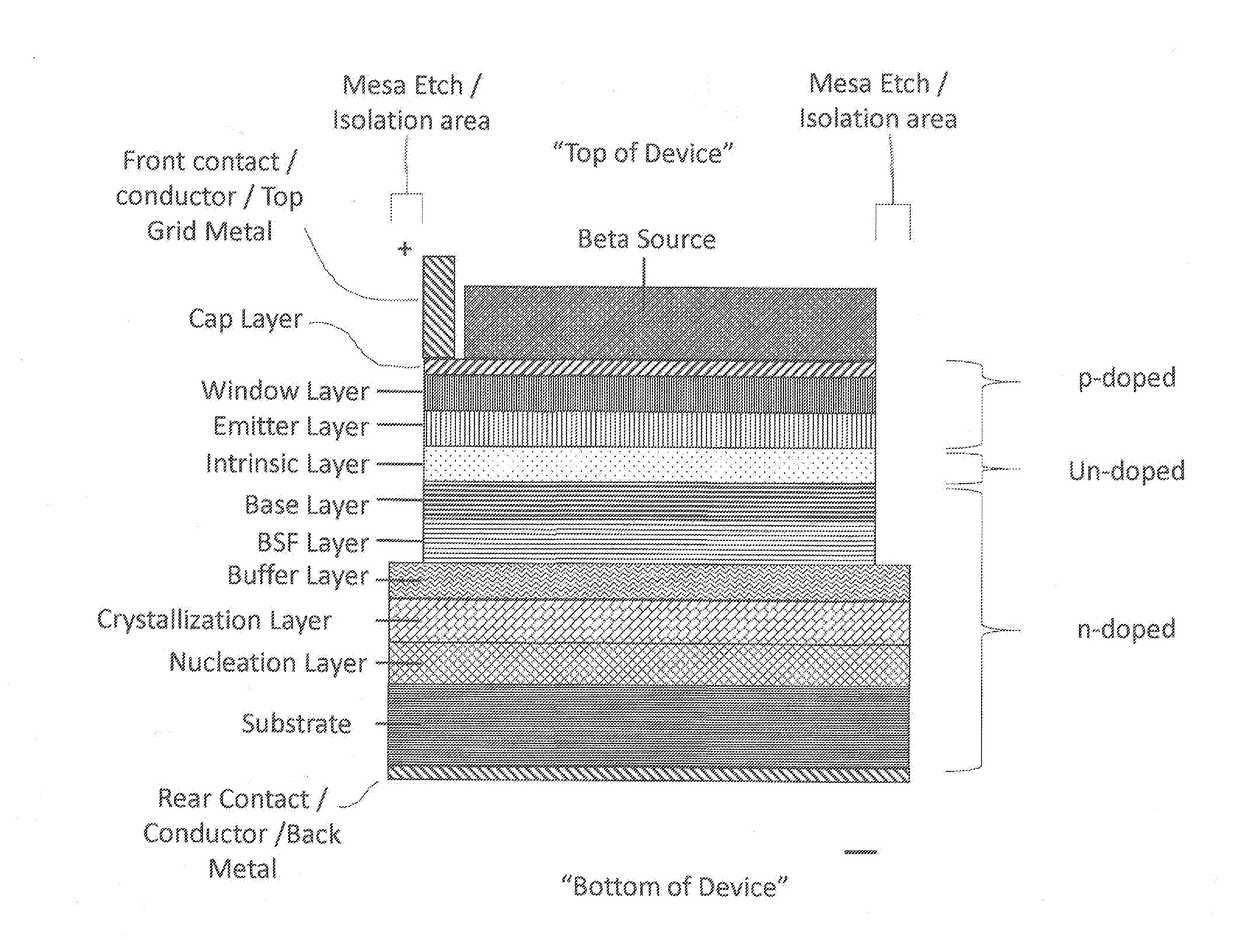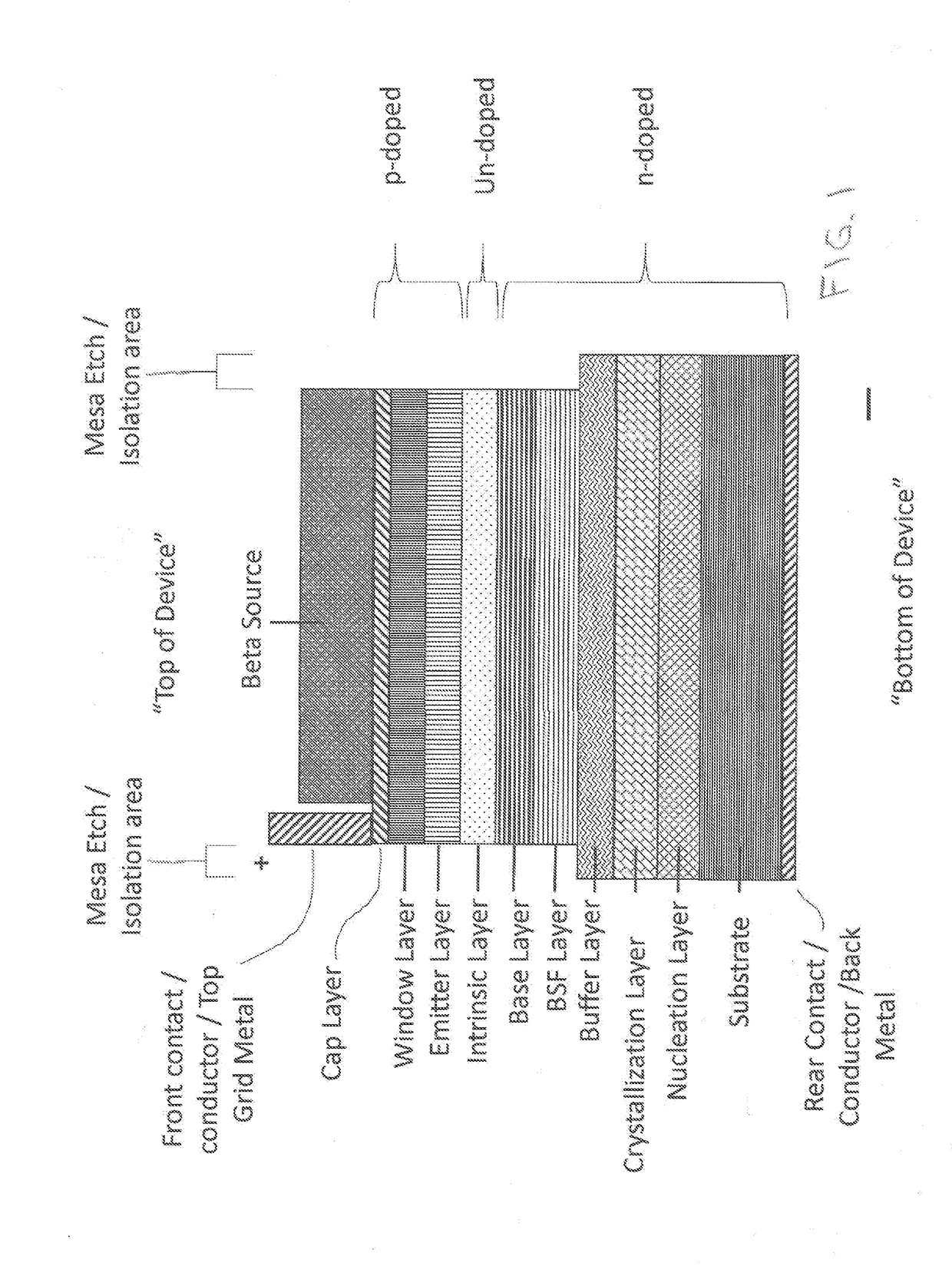Series and/or Parallel Connected Alpha, Beta, and Gamma Voltaic Cell Devices
a gamma voltaic and cell technology, applied in semiconductor devices, radiation electrical energy, nuclear engineering, etc., can solve the problems of reducing efficiency, affecting the operation of operators in the vicinity of the device, and consuming energy that is harmful to the operator,
- Summary
- Abstract
- Description
- Claims
- Application Information
AI Technical Summary
Benefits of technology
Problems solved by technology
Method used
Image
Examples
Embodiment Construction
[0028]The present invention implements configurations and structures for use in creating series and / or parallel stacked betavoltaic cell devices that are both easy to manufacture, and that can be utilized across all betavoltaic junction materials (e.g. III-V materials, silicon, germanium, silicon carbide, diamond, etc.).
[0029]The push for higher power and energy density betavoltaics means that every facet of a betavoltaic system needs to be optimized. Commonly-owned U.S. Pat. No. 8,487,507 (entitled Tritium Direct Conversion Semiconductor Device) describes a method for optimizing semiconductor materials by making the substrate extremely thin or by using an epi-layer lift-off (ELO) process. This same patent describes a method for surface deposition of a thin metal tritide material directly on the surface of the semiconductor.
[0030]Solar photovoltaic cells typically have opposing polarity contacts on the top and bottom surfaces of the cell; these cells are arranged in large areal, pla...
PUM
 Login to View More
Login to View More Abstract
Description
Claims
Application Information
 Login to View More
Login to View More - R&D
- Intellectual Property
- Life Sciences
- Materials
- Tech Scout
- Unparalleled Data Quality
- Higher Quality Content
- 60% Fewer Hallucinations
Browse by: Latest US Patents, China's latest patents, Technical Efficacy Thesaurus, Application Domain, Technology Topic, Popular Technical Reports.
© 2025 PatSnap. All rights reserved.Legal|Privacy policy|Modern Slavery Act Transparency Statement|Sitemap|About US| Contact US: help@patsnap.com



